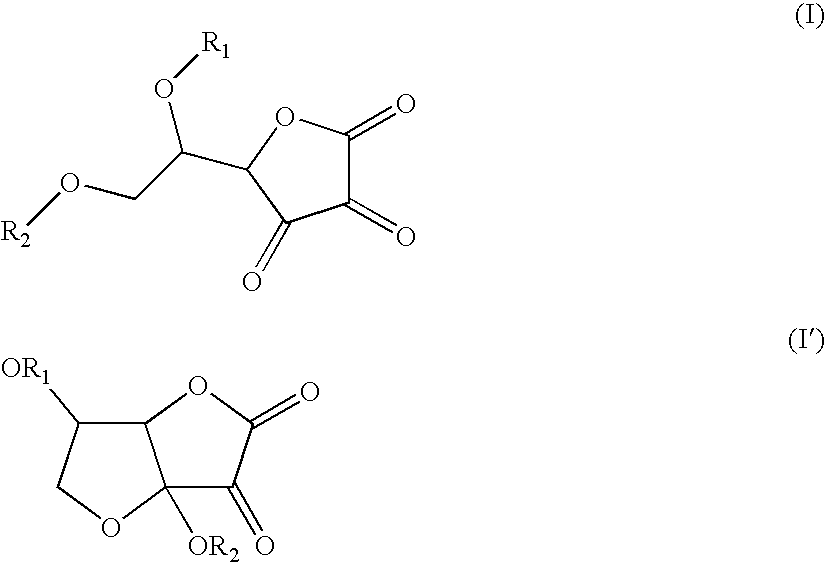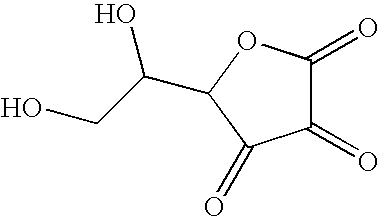Application of dehydroascorbic acid or derivatives/isomers thereof for artificially coloring the skin
a technology of dehydroascorbic acid and artificial coloring, which is applied in the field of cosmetic topical application of dehydroascorbic acid and monomeric derivatives, polymeric derivatives, etc., can solve the problems of adverse changes, long time for coloration to develop, and not always desirable natural tan
- Summary
- Abstract
- Description
- Claims
- Application Information
AI Technical Summary
Benefits of technology
Problems solved by technology
Method used
Image
Examples
example 1
[0586]The products are evaluated on the Episkin model of reconstructed skin after 18 days of culturing. The crucibles are placed on Whatman paper. 20 μl of a 5 wt % solution of test product in a 50% water / 50% ethanol mixture. After 24 hours, washing is performed with 1 ml of water containing 1% sodium lauryl ether sulfate, with stirring for 1 minute. A second rinse is performed with 1 ml of water. The residual liquid is absorbed using a soft paper tissue. The measurements are taken using a Minolta CM-2600d spectrocolorimeter.
[0587]Material:
Spectrocolorimeter Minolta CM2600d
[0588]Illuminating agent: D65
Observer: 10°
[0589]SCE: specular excluded
[0590]The results are expressed in the system (L*, a*, b*) dans lequel L* is the luminance, a* is the red-green axis (−a*=green, +a*=red) and b* is the yellow / blue axis (−b*=blue, +b*=yellow). Therefore, a* and b* express the coloring of the skin.
[0591]The color deviation is obtained with the color deviation formula of Hunter in the calorimetric...
example 2
Coloring from Vitamin C
Example 2a
Chemical Oxidation
[0594]is carried out by mixing 5.7 mmols of hydrogen peroxide with 5.7 mmols of sodium ascorbate. The resulting mixture is left during 2 hours at 30° C.
example 2b
Enzymatic Oxidation with a Free Enzyme
[0595]An oxidation of the vitamin C under the form of sodium ascorbate by enzymatic reaction is carried out by mixing extemporaneously 5 μl of a 5 units / ml of ascorbate oxidize solution in a phosphate buffer of 0.1 M and pH 7.5 with 20 μl of a sodium ascorbate solution of 10 mM in a phosphate buffer of 0.1 M and pH 7.5.
PUM
| Property | Measurement | Unit |
|---|---|---|
| temperature | aaaaa | aaaaa |
| solubility | aaaaa | aaaaa |
| mean size | aaaaa | aaaaa |
Abstract
Description
Claims
Application Information
 Login to View More
Login to View More - R&D
- Intellectual Property
- Life Sciences
- Materials
- Tech Scout
- Unparalleled Data Quality
- Higher Quality Content
- 60% Fewer Hallucinations
Browse by: Latest US Patents, China's latest patents, Technical Efficacy Thesaurus, Application Domain, Technology Topic, Popular Technical Reports.
© 2025 PatSnap. All rights reserved.Legal|Privacy policy|Modern Slavery Act Transparency Statement|Sitemap|About US| Contact US: help@patsnap.com



